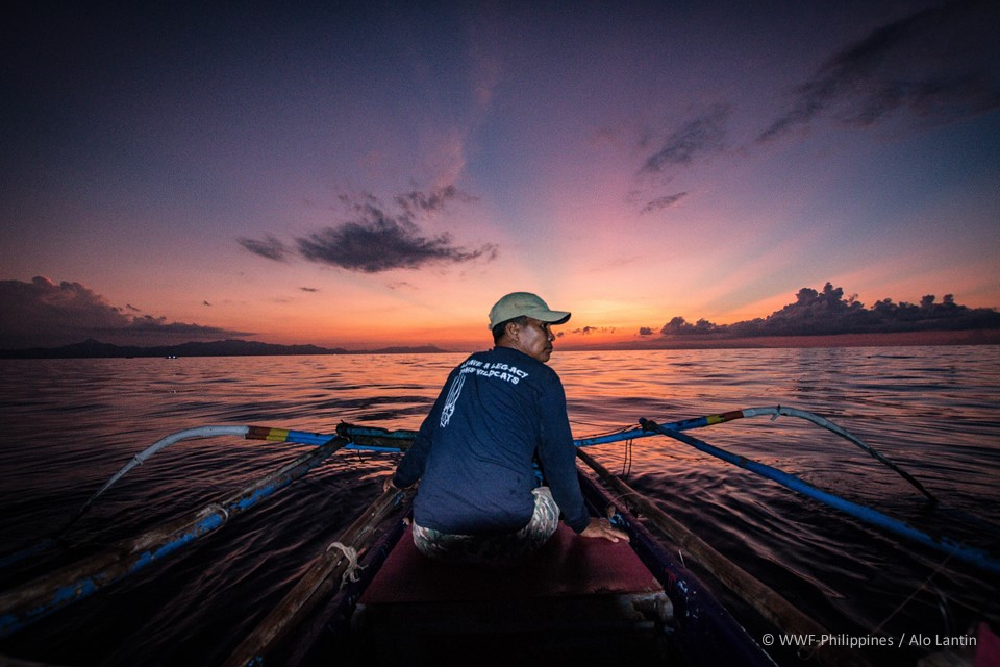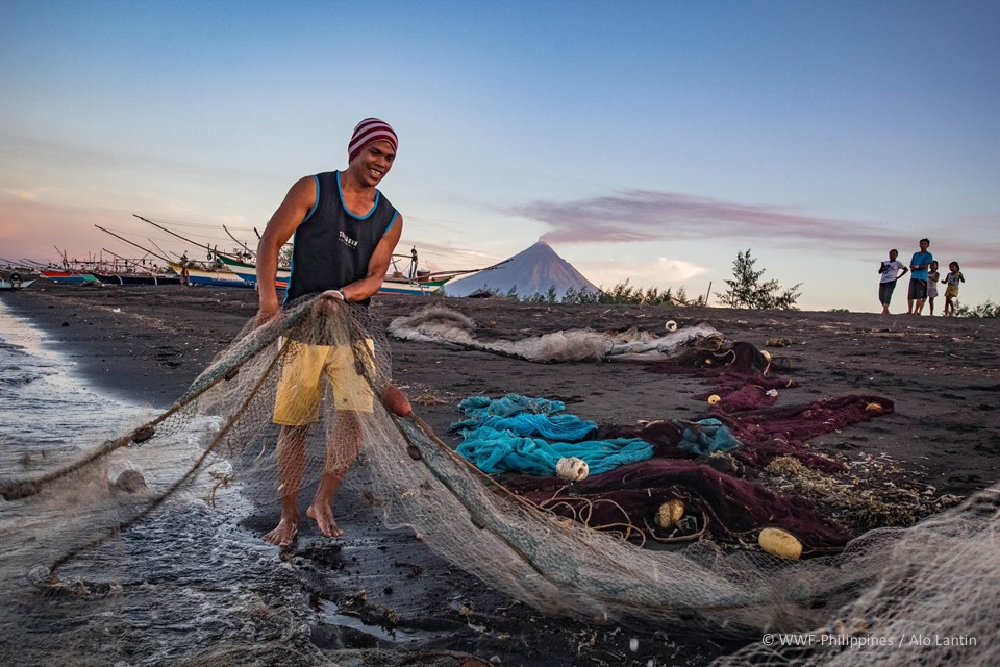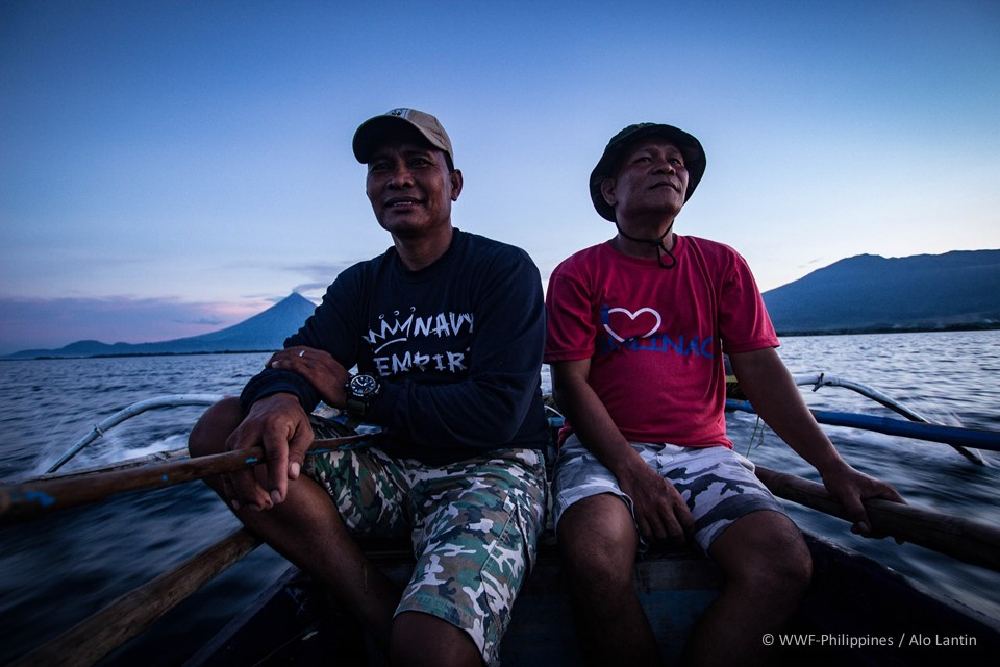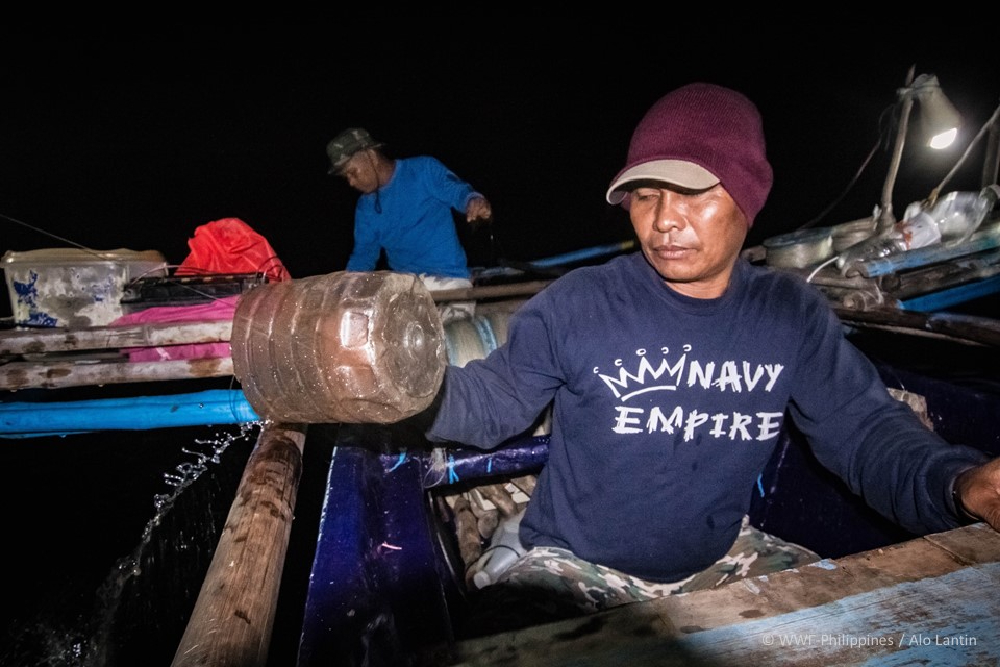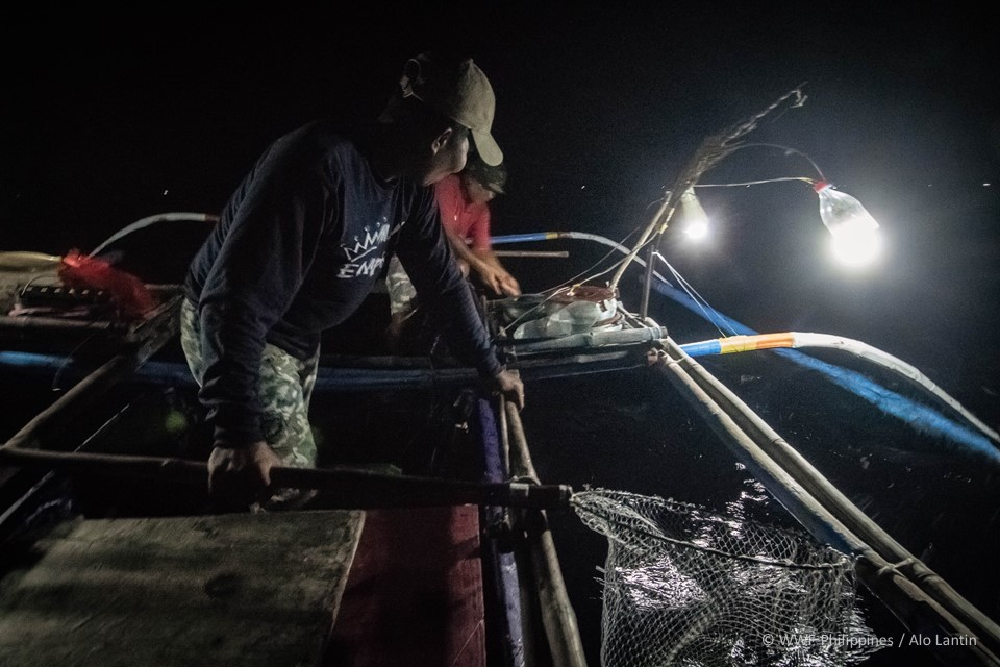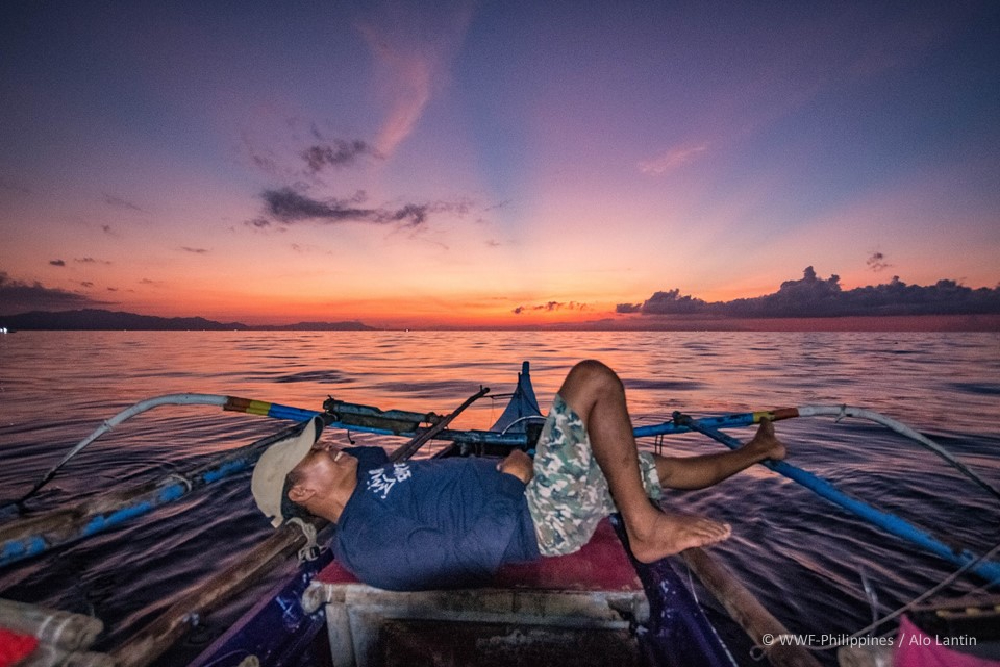Starry night. Stars blip into existence in the sky and in the water as the last of the sun’s rays clip across the backs of tall mountains. Soon, all that is left is soft starlight shining on the tops of wooden fishing boats, stalwart against the cold and the dark, their lines slack in waters once rich with schools of tuna.
As night falls, Bicol’s night fishermen take to sea.
Lagonoy Gulf, Bicol: a tuna-rich stretch of water that bleeds out into the Pacific off the Eastern seaboard of the Philippines. To the South are the cities of Legazpi and Tabaco, while to the North and Northeast are Caramoan and Catanduanes Island. Between them, gulf waters spill into the high seas and cold waves of the Pacific Ocean.
On the shore, sat on the boughs of a fishing boat no wider than a two feet, are Joel Bongkingki and Edgardo de Vera. The two are good friends and have worked the fisheries of Lagonoy Gulf ever since their childhood, their moorings never straying from the seaside town of Manilao. Both hold college degrees from local universities, and both are active and outspoken members of their local tuna federation. Both are also partners of the World Wide Fund for Nature (WWF) Philippines, supporting the livelihoods of their fellow fishermen in town halls and at nationwide conferences. Today, however, they’re just regular fishermen heading out to sea.
Joel begins loading fish chum into the boat. “It’s good to wear a jacket if you’re going to fish at night,” he says in Tagalog, wrapped tight in his sweater, his head snug in a hat. “It’s freezing.”
Eight in the evening. The last light of day has long gone. All is pitch black under the new moon save for a bubble of white light that wraps around the fishing boat. A stiff breeze blows in from the Pacific, frigid and unrelenting.
Finding a calm spot in the gulf, Edgardo weighs anchor, pointing a bright white light down at the murky depths below. The light attracts tuna in the moonless night, he says.
He and Joel set about the boat, baiting lines with chum and hanging them off the sides. They catch squid on a small hand line, which they then use to lure in tuna from the depths of the sea. The small scale of their fishing operations makes municipal fishermen good stewards of sustainability, their hand lines capable of catching no more than a single tuna at a time.
“When it’s off-season, you’re up against luck. When it’s tuna season, what you’re up against is the weather,” explains Joel. Tuna season in Eastern Bicol starts around August, at the height of the monsoon season, he continues. The seas are at their roughest at this time, and often fishermen are left stuck on shore, unable to set sail. Other times they take their chances with the weather, risking their lives against a churning ocean.
“The tuna, they don’t like the heat. When it’s hot, they’ll go far away. That’s why in the day, they prefer to stay deep,” explains Edgardo.
With their lights on the lookout and their hand lines baited and ready, the two lean against the boughs of the boat, their eyes never straying from the still sea that surrounds them. They sit, their hands ready like triggers on their hooks and nets, waiting to snag their first tuna. Then they wait.
And wait. Together, they wait all night.
“See all those lights? It’s like we’re headed down an expressway,” said Joel, gesturing with a nod at the pinpricks of white light shining all around. Lagonoy Gulf teems with the lights of fishing boats late each night – but in the depths, things seem quieter.
The waters of the Philippines have always been rich with tuna, with Yellowfin being among the most common varieties. In the 1970s, the arrival of Japanese traders led to a boom in the local tuna industry, attracting more and more Filipinos to the bounty of the sea. The Philippines soon became a leading player in the international tuna industry, with commercial outfits dominating the archipelago.
No matter the size of the Philippine tuna industry, though, a lack of capital and capacity keeps municipal fishermen from reaching more fruitful markets. Local diets are more interested in reef fish than they are in tunas.
“A kilogram of tuna is only 150 pesos. Before, it could go for much higher. I manage a rice field, you know, when the fishing isn’t good. You have to have other ways to make money in this industry,” explains Joel. With cheap pelagic fish from commercial outfits now flooding local ports and with little access to high value markets, municipal fisherman now find themselves having a hard time earning off their catches, no matter how much they’re able to reel in. During lean season, however, they’re lucky to bring home even a single tuna.
“This is risky work, you know. Some even head to the high seas in search of tuna. There are a lot of widows of high seas fishermen back in town,” adds Edgardo.
“It’s like even the squid are running out. See, look – these ones are all so small,” says Edgardo, holding out a line loaded with squid no longer than a finger.
WWF-Philippines has been working with the fishermen of Lagonoy Gulf for the past eight years, pursuing efforts, exploring new technologies, and supporting policies to uplift the livelihoods of their rural partners. With the help of WWF-Germany and with the help of seafood companies from Europe, WWF-Philippines has helped municipal fishermen form into associations, journeying with them as they take to nationwide forums to share their plight with the world. With fish stocks now dwindling, though, it isn’t enough to keep people from overfishing. WWF-Philippines wants their fishermen to make more for their catches, too.
“We grew up doing this. It isn’t easy to just change livelihoods,” says Edgardo, holding a squid up to one of the lamps to examine it. He hooks it back on a line and tosses it back into the ocean. “You know, if there were a way to earn more from this work, then why not?” says Edgardo.
At WWF-Philippines, the challenge lies in building a market for these municipal fishermen, both on local shores and in ports abroad. The goal, for WWF-Philippines and for fishermen like Joel and Edgardo, is to build value for sustainable fish, so that both fishermen and fisheries can prosper.
“No catch tonight,” says Joel, reeling in the hand line as the first rays of morning turn the sky from deep blue to pink. In the hold lie a couple of pinkish squids and a silvery freckled driftfish – but no tuna. Not so much as a glimpse of one, all night.
“This is the fourth night in a row without a catch,” sighs Joel.
The fishermen of Lagonoy Gulf have come a long way since work first started with WWF-Philippines more than eight years ago. Empty holds and small sales prove that much work needs to be done, and fishermen like Edgardo and Joel sit deep into the night with their hand lines, waiting for better days. As their fishing association thrives and as new developments and innovations come in, however, hope continues to build.
Joel holds up the driftfish he caught while out at sea. “Well, at least we caught this one,” he says with a laugh, slipping it back into the hold with a smile. “Maybe we’ll have better luck tomorrow.”
Our fishermen wait for more fruitful days as they fight for the true value of their livelihoods. They fight for a tomorrow where their oceans thrive – for their sake, and the sake of the planet.



